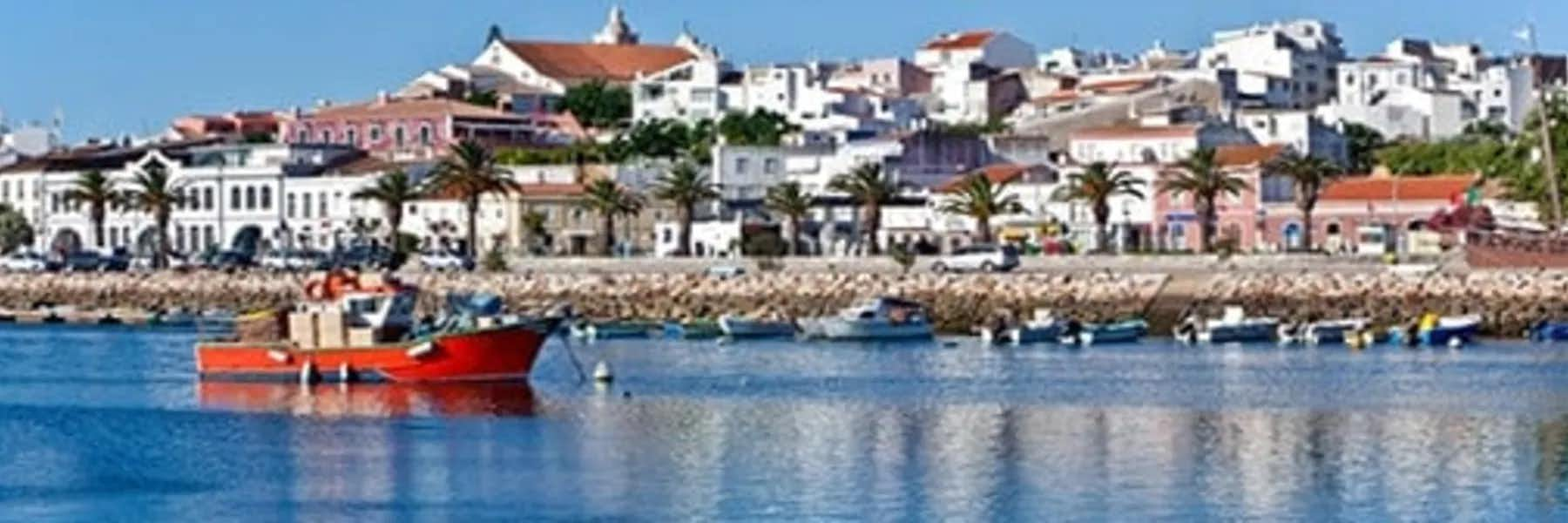The world is full of affordable destinations where your dollar goes further. While filling a tank of gas, getting the week’s groceries, paying rising health insurance premiums, and making all the other ends meet costs us more back home…thousands of folks have discovered that there are places overseas where even a little goes a long, long way.
Here are the best spots to retire for under $30,000 a year—in Europe, Latin America, and Southeast Asia—that make good sense for a lower-cost, high-quality life.
Puerto Viejo, Costa Rica
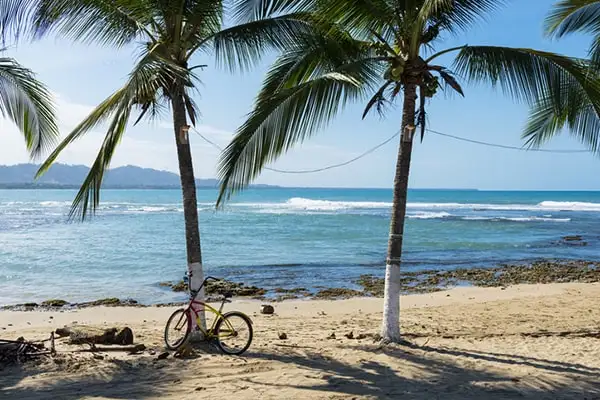
The Caribbean coast’s heart is the little town of Puerto Viejo de Talamanca—a great place for retirees looking for a slow-paced life in a beautiful setting.
The year-round warm weather on Costa Rica’s Caribbean coast lends itself to outdoor activities like snorkeling, surfing, and more.
Puerto Viejo offers a low cost of living thanks to lower rent, property taxes, food costs (especially if expats stick with locally grown products), and the availability of a low-cost public healthcare system.
“That said, cost of living is very dependent on lifestyle,” says Jason Holland, IL Roving Latin America Editor.
“Thanks to the influence of tourism, there are plenty of opportunities to dine at Italian and Argentinian restaurants, as well as French cafés that cost considerably more than local options. And local supermarkets stock plenty of imported items.”
A couple can live the good life on $2,025 a month, or $24,300 a year.
Lagos, Portugal
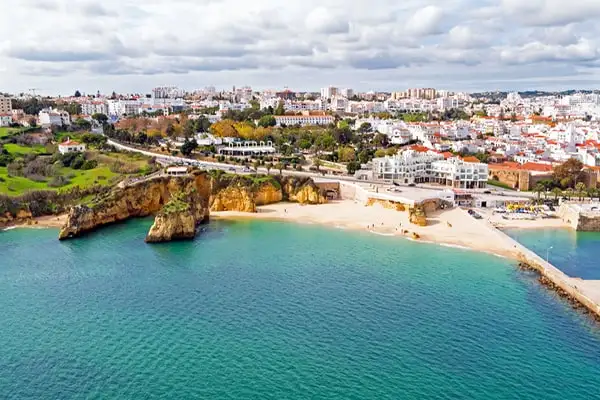
For expats looking to live near the ocean, Lagos, a town in southern Portugal’s Algarve region, is an ideal choice. A pleasant climate, beautiful natural surroundings, an abundance of dining and party venues, and easily available transportation make Lagos perfectly suited for retirement.
It’s easy to get around Lagos on foot—much of the city is fairly flat, especially around the marina. And it’s easy to get to—Faro with its International Airport, is just one hour from Lagos.
The town is blessed with a year-round moderate climate, with average temperatures ranging from 52 F in winter to 75 F in the summertime, when the normal average population of 22,000 swells with visitors from Europe and elsewhere.
Despite the tourist-oriented nature of Lagos, particularly during the peak season of July and August, prices are not as high as you might think. A budget for two people runs to $2,080 a month or $24,960 a year.
Akumal, Mexico
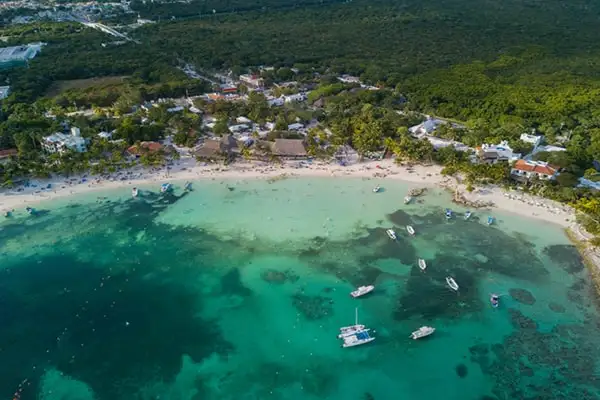
“The varied shades of blues, aquamarine, and turquoise blend and swirl together as the clear tropical waters of the Caribbean Sea gently bathe the sugar-sand beach,” says Don Murray, IL Riviera Maya Correspondent. “This is the small community of Akumal in the Mexican state of Quintana Roo and for those who call it home, there is no better place to be.”
Mexico’s famed Riviera Maya stretches from Cancun in the north, 80 miles south to Tulúm. Akumal (Mayan for Land of the Turtles) rests between Playa del Carmen and Tulúm. Famously known for its spectacular clear bay filled with sea turtles, Akumal has matured from a secretive destination for divers to a growing tourist hotspot.
“Until the last few years, this tiny beachfront town was often a day trip for a small number of vacationers in Cancun and Playa del Carmen,” Don says. “Notably, these day-trippers were often those who had heard of the amazing diving and snorkeling in the clear, shallow bay, permitting close encounters with the many sea turtles who call this special place home.
“Akumal is no longer just a day trip but is emerging as a primary destination. The town—and the entire Riviera Maya—attract those who love the water and water activities, as well as people who love wiggling their toes in the sand and sipping a tall, cold rum drink with skewered fruit hanging from the edge.
“In general, Mexico offers a significantly reduced cost of living when compared to the U.S., and Akumal falls in line with that expectation. However, Akumal is a growing tropical town on the Caribbean Sea and that profile is not available anywhere in the U.S. That said, life in Akumal is affordable and provides excellent value for money.”
A couple can live a dreamy Caribbean lifestyle in Akumal on a budget of $2,240 a month, or $26,880 a year.
Volcán, Panama

Volcán is a town set in the highlands of the Chiriquí province, in western Panama, shadowed by Panama’s only volcano, Volcán Baru. Most people visiting the Chiriquí province probably won’t have heard of Volcán, but that is exactly what has kept this part of the province so special and unchanged.
The sprawling town of Volcán is the hub of the farming community in the valley, with a population of around 14,000 people. Volcán is a healthy and affordable place to live, ideal for those looking for a quiet, slow-paced country lifestyle, within easy reach of a city and a beach.
It’s the perfect spot for nature lovers—Volcán Baru National Park and La Amistad Park are close by offering hiking trails into the protected forests and jungles. Due to its rich volcanic soil, Volcán is deemed the “breadbasket of Panama” producing most of the country’s vegetables and most of the flowers and bouquets enjoyed by Panamanians all over the country.
The lifestyle is relaxed—a place where expats enjoy social interaction by visiting friends and going to local expat hangouts on weekends. However, living in Volcán will require you to know some Spanish to be able to communicate with the locals and do business.
A couple can live an enjoyable, peaceful escape on a monthly budget of $1,514—$18,168 a year.
Medellín, Colombia
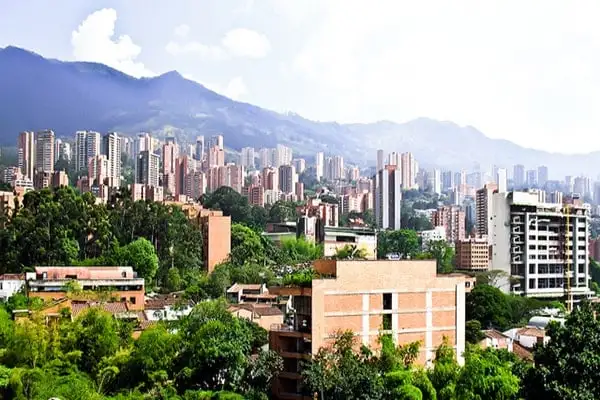
Tucked into a valley surrounded by the Andes Mountains lies Colombia's second largest city, Medellín. The City of Flowers enjoys a spring-like climate year-round, which attracts retirees looking for an active, outdoorsy lifestyle with all the benefits of a city.
Accentuated with green parks, flowers that are always in bloom, bubbling streams, and hundreds of birds in vivid colors—Medellín feels smaller than the metropolis that it is.
With over 30 universities, an array of art and history museums, theaters, restaurants, and several sports complexes, Medellín has a cosmopolitan vibe. The Metropolitan Theater presents a varied program of international classical music, jazz music, and dance performances. The Museo de Antioquia, located just off the Parque Berrio Metro stop, is home to a large collection of paintings and sculptures by Medellín native, Fernando Botero.
The cost of living depends on the type of lifestyle retirees choose, but Medellín is less expensive than many comparable U.S. cities.
A couple could live well on a budget from $1,400 to $2,000 per month—$16,800 to $24,000 a year.
Volterra, Italy
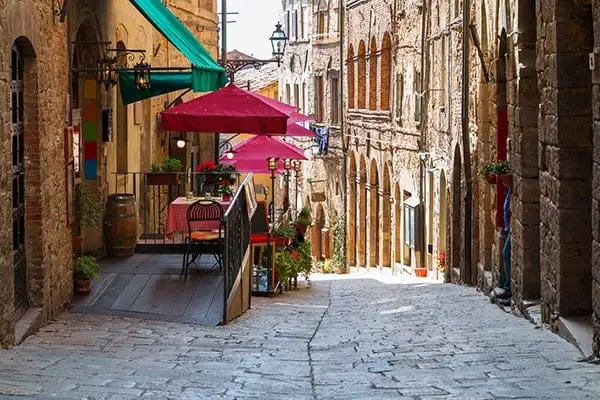
Volterra is one of Tuscany’s best preserved and most historic towns, with a past dating back more than 2,500 years. The Twilight movies were filmed around the town’s piazzas and streets, representing the seat of power of the vampire coven, the Vulturi.
Despite its location just 20 miles from the super-famous San Gimignano, Volterra gets just a trickle of tourists.
“Called the City of Alabaster, artisans have been mining and crafting the stone in Volterra since the Etruscans and have honed it to a fine art form,” says Valerie Schneider, IL Italy Correspondent. “It is also consistently listed among the most beautiful towns in Tuscany.
“Volterra offers a wealth of historic and archeological sites, from an Etruscan acropolis and walls, to the Roman theater and medieval monuments. The Piazza dei Priori is one of Italy’s prettiest squares containing the oldest town hall in Tuscany, dating to 1208. The piazza is hemmed in by frescoed palaces and is an enchanting public space.
“Most of Tuscany is expensive, but Volterra is still one of the exceptions. Despite having a high quality of life, pleasant atmosphere, and lots of local business activity, the real estate prices aren’t through the roof.”
A couple can live well on $1,715 a month, or $20,580 a year.
Placencia, Belize
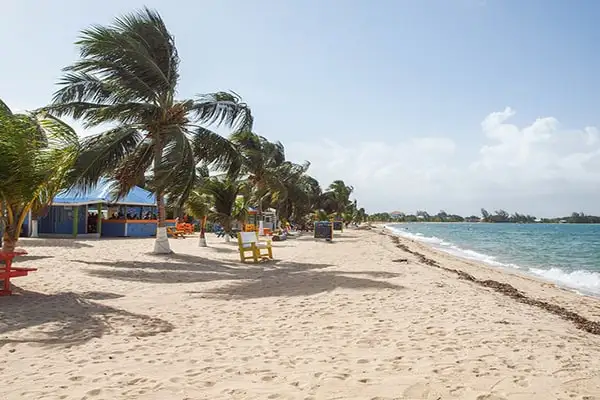
With 16 miles of beach along a palm-lined peninsula, Placencia on the Caribbean coast of Belize offers a tropical paradise feel at an affordable price.
Placencia is a charming seaside town found at the tip of a long peninsula off the coast of mainland Belize. It’s fast becoming Belize’s most desirable location as it fronts the turquoise Caribbean Sea to the east and a resplendent freshwater lagoon, full of wildlife and with a view of the gorgeous Maya mountain chain, to the west.
The region was once an “off-the-radar” destination but Placencia has come a long way. Remnants of this former fishing village are still apparent—keeping the authenticity and natural beauty of the area is important to residents and newcomers alike—but today there’s a selection of trendy, sophisticated restaurants, bars, and cafés as well.
The combination of relaxation with adventure makes Placencia a perfect beach paradise. A couple can live a laidback lifestyle here on a budget of just $2,500 a month—$30,000 a year.
Mafra, Portugal
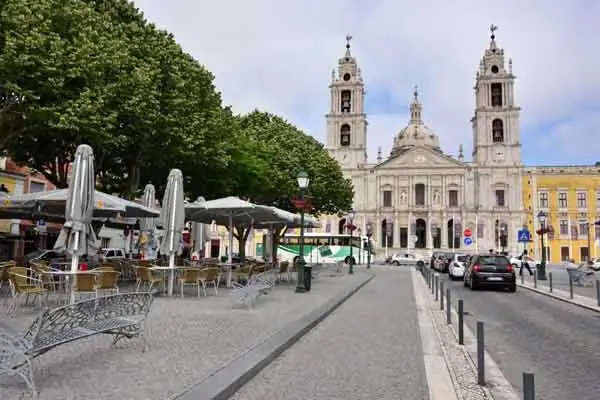
©iStock.com/znm
Located 21 miles northwest of Lisbon and 15 minutes from world-class surfing beaches in Ericeira, Mafra is the proud possessor of one of the country’s largest national palaces.
Mafra offers an attractive mix of indoor culture with outdoor opportunities in both a splendid park next to the palace called the Jardim, and the nearby Tapada de Mafra, the former royal hunting grounds established in 1747.
The town is a low-key place of white-washed houses trimmed in yellow and blue, lining narrow cobbled streets. The scent of grilling sardines is ever-present in the air, along with the sound of laughter and clinking glasses in the village’s many cafés and bars.
Mafra’s palace, cultural center, and music school all provide frequent concerts, plays, and other events. But if you want to spread your wings a bit, no problem. A reliable, comfortable bus service operated by Mafrense departs regularly from in front of the palace, to the Campo Grande bus station in Lisbon. Express buses make the trip in approximately 40 minutes. The cost is $5.30 one way, $8.80 roundtrip. In the opposite direction, at the end of the line you’ll find yourself at the beach in the world-class surfing reserve of Ericeira.
In Mafra, a couple can live well on a monthly budget of $2,034 or $24,408 a year.
Cuenca, Ecuador
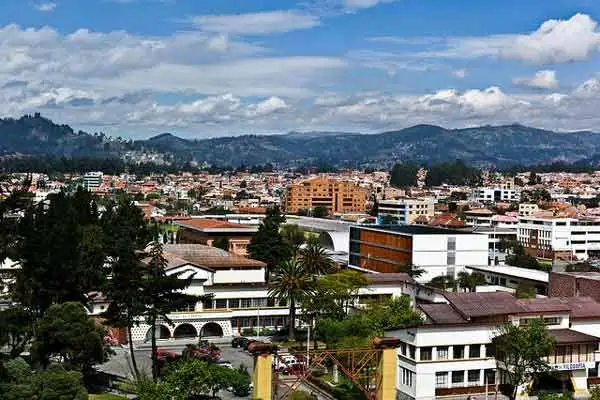
Cuenca, Ecuador’s third-largest city and the economic center of the southern sierra, has leaped into the international spotlight in recent years.
Cuenca has long been known for a rich intellectual, artistic, and philosophical tradition that matches its colonial architecture. It is famous for colorful festivals, distinctive food, and breath-taking scenery.
And because of its history and state of preservation, Cuenca is one of Ecuador’s five UNESCO World Heritage Sites.
Keith Paul and his wife Tina have no regrets about retiring to Ecuador. And they’ve felt that way ever since their move to Cuenca from California in January 2016.
What do they like best about living in the city? Keith says, “The people here are great, both in the gringo community and with the local Ecuadorians.” Tina adds, “We’re friends with many local people, who’ve made us feel like we’re part of their family. We could be busy every day of the week with our new friends.”
After researching several different Latin American countries to retire to, they realized that Ecuador offered exactly what they needed. Top on their checklist was to live in a city where there were many interesting and varied activities to ensure they could be kept busy; where the climate was temperate and not extreme; where walking around was easy and owning a car was not necessary; where the cost of living was low; and where they felt safe and secure.
Cuenca won, hands down.
Opting to rent, their three-bedroom, two-and-a-half bathroom, 1,400 square foot condo costs just $700 a month.
Pat and Rick Jackson wanted to retire at 55, and they also met their goal thanks to moving to the colonial city.
“Living in Cuenca costs about 25% of what it cost us to live in Philly,” says Pat. They pay just $500 a month for their two-bedroom, two-bathroom condo in the Puertas del Sol neighborhood.
A couple can enjoy a wonderful retirement on $1,680 per month in Cuenca, excluding travel—that’s $20,160 a year.
Central Valley, Costa Rica
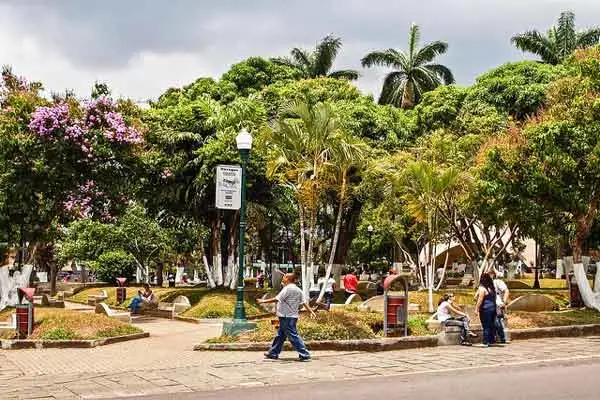
The Central Valley—home to about two-thirds of Costa Rica’s population—is the place to find elegant residential communities, excellent medical facilities, first-class shopping, splendid restaurants, and spectacular natural wonders, including volcanoes, soaring waterfalls, roaring rivers, and wildlife-filled forests.
It’s hard to beat the Central Valley when you’re looking for a beautiful, friendly, and relatively inexpensive place to live. Nestled among forests, mountains, and farms are villages where expats have been living side by side with Costa Ricans for many decades.
Throughout the Valley there are charming, small towns that will remind you of another age.
Like many expats living la Pura Vida in Costa Rica, Ania and Tom Dudek—and their two sons—first visited the country on vacation. “For years, we would come for a month and rent a house in a different area each time,” says Ania. “But one day, we fell so in love with Costa Rica and the people there that we decided to start a new chapter in our lives and move.”
The family eventually moved full time to the small mountain town of Atenas. Settled high in Costa Rica’s perfect-weather Central Valley, the town is midway between the beaches of the Pacific coast and the metropolitan capital of San José (only an hour’s drive east or west). A coffee and ranching town, Atenas is known for pleasant, sunny weather and touts the slogan: “The Best Climate in the World.”
“People like to go to the beach on vacation. But if they are looking to move to Costa Rica, they should come to Atenas and just stay three or four days to see how nice it is here. We love it here.”
A single person can live on between $1,500 and $1,800 a month or $21,600 a year. Some single people scrape by on considerably less, and others spend hundreds of dollars more. In most cases a couple can live well on $2,000 per month and even better on $2,500. It depends on your lifestyle.
Pedasí, Panama
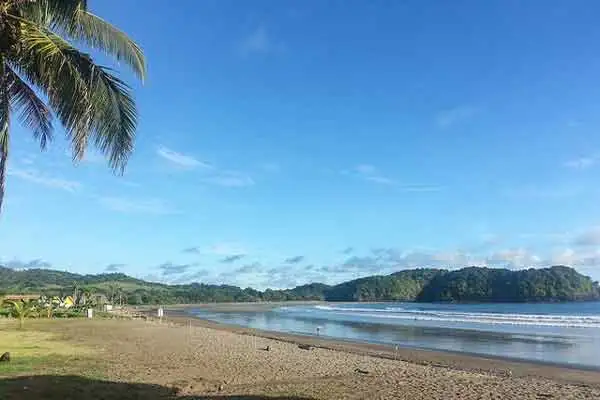
Pedasí, the small town on Panama’s Pacific coast, is a four-hour trip from Panama City. The fishing town, sitting on the tip of the Azuero Peninsula, is best known for the expansive beaches just outside of town, regarded by many Panamanians to be among the nation’s most beautiful.
With friendly locals and a tiny population, Pedasí is a place where the pace of life is slow and the people are laidback. Unspoiled, dark brown beaches are coupled with often stunning rock formations and warm Pacific waters. Large cattle ranches and corn fields surround the village.
“Our lives here are a far cry from the hectic existence we lived back in Florida,” says Jim Gault of he and his wife, Abbe’s move to Pedasí.
The Gaults own their own home and car and Jim says, “I’m collecting my Social Security and we live comfortably on $2,000 a month, including several trips within Panama and one trip abroad per year. That works out at $24,000 a year.
“A beer is $1 to $2 a bottle, our car insurance is just $600 for the year, and we have a housekeeper for just $15 for a half day. I have two different gardeners and several handymen who help me with our home for $5 an hour.”
Phnom Penh, Cambodia
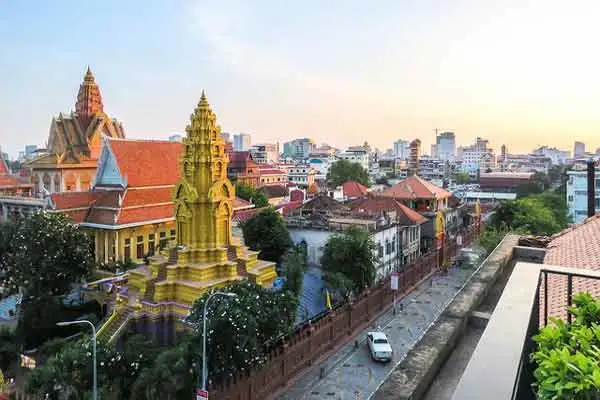
If you are worried you don’t have $30,000 a year to retire, there are still spots where you can live well on a modest budget—like super-affordable, exotic Cambodia. For the third year in a row, Cambodia claims top spot in the cost of living category in IL’s Annual Global Retirement Index.
While the cost of living in Cambodia may be one of the lowest in the world, the standard of living is high—leading to more retirees and expats choosing to make this country their home each year.
San Diego-native Tom Richter lives in Phnom Penh, Cambodia’s capital city. “This country has made me feel 15 years younger, compared with living in the States,” Tom says. “I made the right decision coming here, and I know it.
“My check from Social Security comes to just over $1,000 per month. But in Phnom Penh that’s a sizable amount.”
His main expense is rent, which comes to $250 per month for a one-bedroom, one-bathroom apartment with a balcony in the center of the city. Utilities average around $80 to $100 a month, including water, electricity, garbage, cooking gas, and drinking water. About $200 a month is enough to keep his fridge filled with food, fresh fruit, and vegetables.
“What I like most is that there is a very local vibe that comes from people in Phnom Penh. Apart from being extremely friendly and happy to meet foreigners, it is just really cool to be able to go to the street corner in the morning to grab a fresh coconut and a newspaper, while shooting the breeze with some of the tuk-tuk drivers who speak good English.”
A single retiree can live here for $1,150 a month or $13,800 a year.
Related Articles
The Cheapest Places in the World to Live
